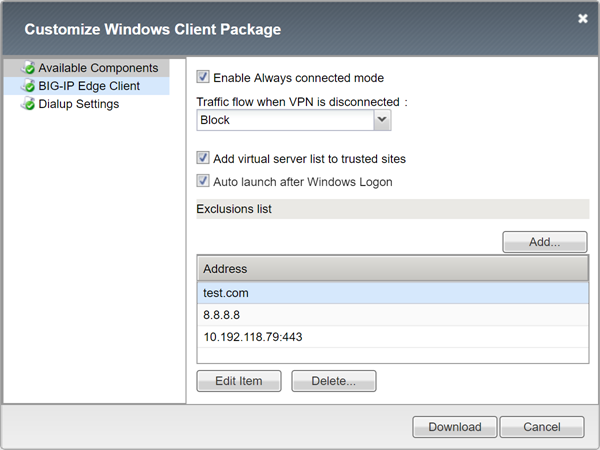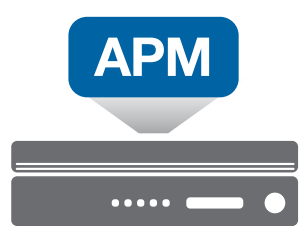
#F5 big ip edge client windows 10 keygen

Thus, this cert needs to use subject alternative names (SAN) to specify these multiple names. With bridging in the picture, there are multiple different names at play for traffic sent to the site system, specifically the name of the F5 and then the name of the site system. Issuer of the cert (or the issuing cert chain) is trusted. For an application to use a cert, it must check 3 things: that the cert is not expired, that the subject name specified is valid (this depends upon the subject name type chosen usually), and that the The underlined statement has to do with cert validity. ConfigMgr traffic is mostly all just HTTPS on ports 4 along with 10123 for client notification - the F5 needs to be able to pass this traffic on to ConfigMgr. This has nothing to do with cert renewal (that's a valid but completely separate concern).Ĭonfiguration of the F5 is up to your F5 team.

The client must be able to check the CRL while it is on the Internet. Jason | | the CRL, using a VPN is not valid. Now, if your F5 is set to pass-through, then there's not much extra to do at all assuming the traffic is routed properly. Most (if not all) will be for ConfigMgr 2007 but they are still applicable. If you search the web for "internet based client management bridge" you'll get lots of hits. Is the scenario in general supported? Yes, however Microsoft only provides guidance for doing so in conjunction with TMG/ISA. They rarely support anyone else's technology. Is using a third-party product like an F5 supported by Microsoft. Proper SANs and the F5 properly passes the traffic along. This is all pretty transparent to ConfigMgr and the client as long as the certs used are configured with the With bridging, the F5 will terminate the SSL traffic and then initiate a new SSL stream to the site system. Ultimately though, ConfigMgr doesn't care as long as the traffic gets to the site system hosting the roles. To your real question here, is the F5 bridging or can it be set to pass-through? Pass-through is generally easier. On the clients, that does lower your security posture. Does this mean you have a CDP exposed to the Internet or is an OCSP responder Internet accessible? If not, you will have issues although this can be overcome by disabling CRL checking Is this scenario supported ? Please let me know what alternates we can have to avoid our SCCM server not directly facing to internet.įirst a question, you said "we have a proper MS PKI infra in-place". VeriSign certificates will be used to encrypt in-coming network traffic to the F5 Big-IP Load Balancers configured as ADFS reverse proxy servers residing in the PQR Zone. Now they are saying that our SCCM clients should hit those devices and then internally re-direct to our SCCM site system server kept in ABC Zone. Network team is saying there is another DMZ zone ( Say PQR Zone ) where they have F5 Big-IP load balancer which are internet facing as per our company policy we cannot make that SCCM Site system server directly available on internet.

Per my knowledge DMZ SCCM Site System server should be accessible to clients over internet connection and to make this happen, FQDN of site systems that support Internet-based client management must be registered as host entries on public DNS servers. The SCCM design is like this : Primary Server is on corporate LAN and I have attached a site system server which is in DMZ network ( Say ABC Zone ). We have the requirement to support internet based clients.we have a proper MS PKI infra in-place.


 0 kommentar(er)
0 kommentar(er)
